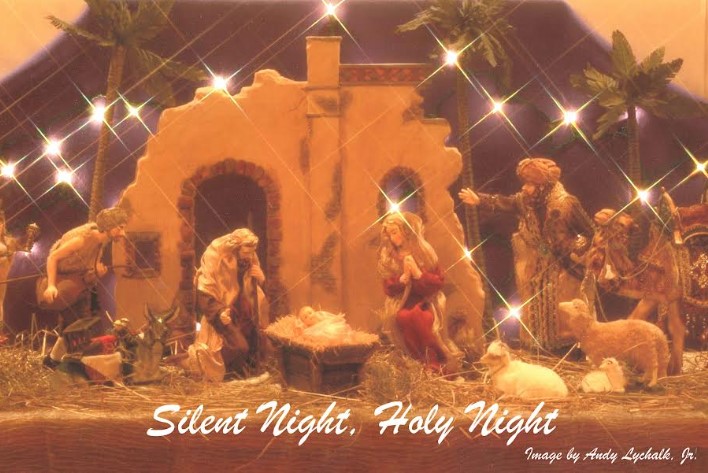STATEWIDE FIREARMS DEER SEASON TO BEGIN NOV. 30
Shoppers have Black Friday. But for Pennsylvania hunters, the real action starts one day later, on the Saturday after Thanksgiving, when the statewide firearms deer season begins.
No other single point of the hunting calendar draws as much participation.
Opening day, which falls on Nov. 30 this year, will put more than half a million hunters in the woods, all looking to bring home healthy venison to fill their freezers. It’s about more than just that, though. For many families – those who hunt from camps and those who hunt closer to home – the deer opener is an event, a chance to bring together family and friends and make memories centered on the outdoors that will be retold for generations.
“Growing up, I looked forward to the first day of deer season all year,” said Game Commission Executive Director Steve Smith. “I’m hardly alone that way. For many of us, hunting, and deer hunting in particular, isn’t just a hobby. It’s a part of the fabric of our lives.
“Our hunting culture, and our commitment to wildlife and conservation, is so strong, so deeply rooted, so passionate, that it’s impossible to separate it from who and what we are.”
This year’s deer season starts on Saturday, Nov 30, continues on Sunday, Dec. 1, then runs from Dec. 2-14, excluding only Sunday, Dec. 8. Hunters are allowed one antlered deer per year, plus one antlerless deer for every Wildlife Management Unit (WMU)-specific antlerless license or Deer Management Assistance Program (DMAP) permit.
Last year, across all of the 2023-24 deer seasons, hunters harvested an estimated 430,010 white-tailed deer. The statewide buck harvest was estimated at 171,600, while the antlerless harvest was estimated at 258,410.
As in years past, the regular firearms deer season accounted for the largest part of the take. Firearms hunters took an estimated 254,710 deer, with 86,260 of those bucks and the remaining 168,450 being antlerless.
Expect similar numbers this year, if history is any guide.
According to the National Deer Association, an advocacy group working to ensure the future of wild deer, wildlife habitat and hunting, Pennsylvania annually ranks in the top five, if not the top three, among states in terms of antlered buck harvest; antlered buck harvest per square mile; antlerless deer harvest; antlerless deer harvest per square mile; and antlerless deer per antlered buck harvest.
That’s been true for at least a decade.
Pennsylvania these days grows bucks with impressive antlers, too. The implementation of antler-point restrictions in 2002 – which limit hunters to harvesting bucks with three or four points on one side, depending on which area of the state – has changed the buck harvest.
At one time yearling bucks, those about 18 months old with their first set of antlers, dominated the harvest. Now, two of every three bucks is at least 2.5 years old. That translates to older, bigger deer with more impressive headgear.
Connecting with one of them, or any deer, is a matter of hunting in good habitat, where deer find the food and cover they need. But it’s also a matter of patience, said David Stainbrook, the Game Commission’s Deer and Elk Section Supervisor.
“Success in harvesting deer starts with scouting and knowing the land,” Stainbrook said. “But putting in time is important, too, so hunters should hit the woods every chance they get. Even one additional day hunting can make the difference between filling a tag or not.”
License requirements
Hunters are permitted to harvest one antlered deer with a valid general hunting license, which costs $20.97 for adult residents and $101.97 for adult nonresidents.
To take an antlerless deer, a hunter must possess either a valid antlerless deer license or valid Deer Management Assistance Program (DMAP) permit. A mentored hunter under the age of 7 cannot apply for their own antlerless license or DMAP permit, but can harvest an antlerless deer if an antlerless license or DMAP permit is transferred to them by a mentor at the time of harvest.
Antlerless deer licenses can be used anywhere within the Wildlife Management Unit (WMU) for which they’re issued. One WMU – 4A, in southcentral Pennsylvania, taking in parts of Bedford, Blair, Franklin, Fulton and Huntingdon counties – still had antlerless licenses available at the time of this release.
Hunters can check up-to-the-minute availability at https://huntfish.pa.gov/pa/antlerlesswmu/remainingquotas, then buy licenses directly from any license issuing agent or online at www.huntfish.pa.gov.
Be aware that licenses purchased online must be mailed, to provide hunters with an actual harvest tag. So hunters buying their license close to opening day may want to do so in person at a vendor, so as to get their harvest tag immediately and be able to lawfully hunt.
A DMAP permit, meanwhile, can be used only on the specific property for which it is issued. Some DMAP permits might remain available on private and public properties throughout the state. Visit the DMAP Participating Properties locator on the Game Commission’s website to learn more about where they are available.
As for mentored hunting permits, they’re available to hunters of all ages. Mentored hunters ages 7 and older receive an antlered deer harvest tag with their permit and can apply for their own antlerless deer license. Those under 7 must receive deer harvest tags from their mentors. A mentor can transfer an antlered deer harvest tag and an antlerless license and/or DMAP permit to a mentored hunter under 7.
Mentored hunting permit fees are $2.97 for residents and nonresidents under 12; $6.97 for residents 12 to 16; $41.97 for nonresidents 12 to 16; $20.97 for residents 17 and older; and $101.97 for nonresidents 17 and older.
Hunters 12 or older who are certified through the Game Commission’s Hunter-Trapper Education program qualify to purchase general hunting licenses, which provide more privileges. Certified hunters 12 to 16 can obtain junior licenses, the least expensive of which cost $6.97 for residents and $41.97 for nonresidents.
Those holding senior lifetime licenses are reminded they must obtain a new antlered deer harvest tag each year, free of charge, to participate in the season.
Hunters are reminded the field possession of expired licenses or tags, or another hunter’s licenses or tags, is unlawful.
Deer season regulations
Antler point restrictions vary by WMU. In most WMUs, a buck with three points to a side, counting the brow tine, is legal to harvest. But in WMUs 1A, 1B, 2A, 2B and 2D, a buck must have three points not counting the brow tine.
Junior license holders, mentored youth, disabled hunters with a permit to use a vehicle, and resident active-duty U.S. Armed Services personnel, can harvest antlered deer with two or more points on one antler, or a spike 3 or more inches in length.
For a complete breakdown of antler restrictions, WMU boundaries and other regulations, consult the 2024-25 Pennsylvania Hunting & Trapping Digest, which is provided to hunters and available online at the Game Commission’s website, www.pgc.pa.gov.
Deer hunters everywhere statewide must wear at all times a minimum of 250 square inches of fluorescent orange material on their head, chest and back combined, visible from 360 degrees, during the firearms deer season. An orange hat and vest will satisfy the requirement.
Nonhunters who might be afield during deer season and other hunting seasons should consider wearing orange, as well. And on state game lands between Nov. 15 and Dec. 15, nonhunters are required to meet the 250-square-inch fluorescent orange requirement.
Hunters who harvest a deer are required to affix a valid tag to the ear – not an antler – before the deer is moved. Hunters can use a large safety pin to attach the tag, as it won’t damage the ear. The tag must be filled out with ballpoint pen.
Hunters must then report their harvests to the Game Commission within 10 days. Harvests can be reported online at www.huntfish.pa.gov, by calling 1-800-838-4431 or by mailing in the postage-paid cards that are provided in the digest.
Mentored youth hunters are required to report deer harvests within five days. Hunters with DMAP permits must report on their hunting success within 10 days of the last possible date of harvest, regardless of whether they harvest deer.
Chronic Wasting Disease
Controlling Chronic Wasting Disease (CWD), an always-fatal disease affecting deer and other members of the deer family, is critical to the future of deer and deer hunting. So preventing the human-assisted spread of the disease is important.
With that in mind, hunters need to know that if they harvest a deer within a Disease Management Area (DMA) or the Established Area (EA), they can take it directly to any Game Commission-approved processor or taxidermist anywhere in the state. The processor or taxidermist will dispose of high-risk parts properly. The list of cooperators is available on the agency website, www.pgc.pa.gov.
Proper disposal helps prevent CWD’s spread to new areas and enhances CWD surveillance, as cooperators must allow Game Commission staff to do biological sampling, such as CWD sample collection and deer aging.
Hunters cannot take a deer from a DMA or the EA and process it themselves outside the DMA or EA. Nor can hunters place any high-risk cervid parts from deer harvested within a DMA or EA on the landscape away from the harvest site.
Just remember one thing: there are, across Pennsylvania, fewer butchers handling deer than in years past. Some get all that they can handle quickly, too, especially around opening day.
So it’s a good idea for all hunters – and especially those removing a deer from a DMA or the EA – to call ahead and make sure your processor of choice is open and accepting whitetails.
And once again, hunters who harvest a deer in a DMA or the EA can get it tested for CWD for free by placing the animal’s head in one of many collection bins, the locations of which are identified on the Game Commission website.
Test results can then be checked at the Game Commission’s CWD dashboard, https://pgcdatacollection.pa.gov/CWDResultsLookup.
Extended bear season
Hunters can harvest a black bear in some WMUs within deer season.
The extended bear season opens Nov. 30, and continues on Sunday, Dec. 1, then Dec. 2-7 in WMUs 3A, 3B, 3C, 3D, 4C, 4E and 5A. The season also is held in WMUs 2B, 5B, 5C and 5D, where it opens Nov. 30, continues on Sunday, Dec. 1, then Dec. 2-14, excluding Sunday, Dec. 8.
Hunters are allowed one bear per year.
To participate in the extended bear season, a hunter needs a general hunting license, as well as a bear license. Properly licensed hunters may also harvest deer.
Fluorescent orange requirements for the extended bear season and firearms deer season are identical.





